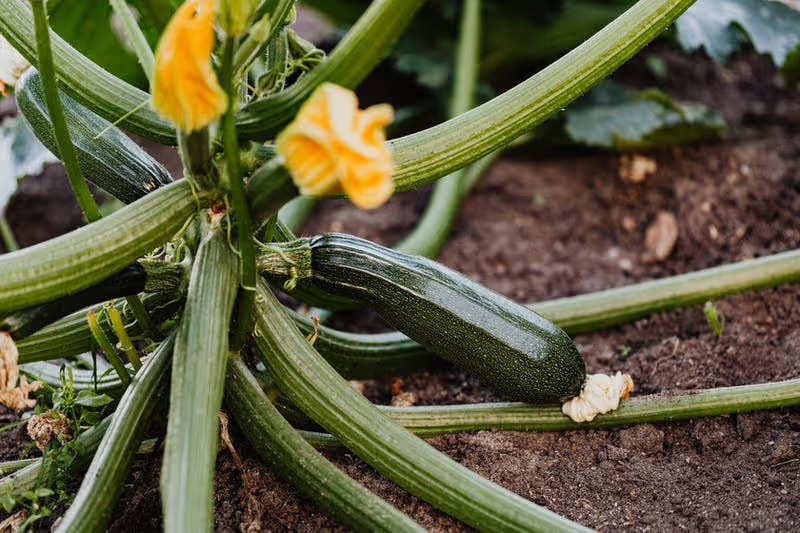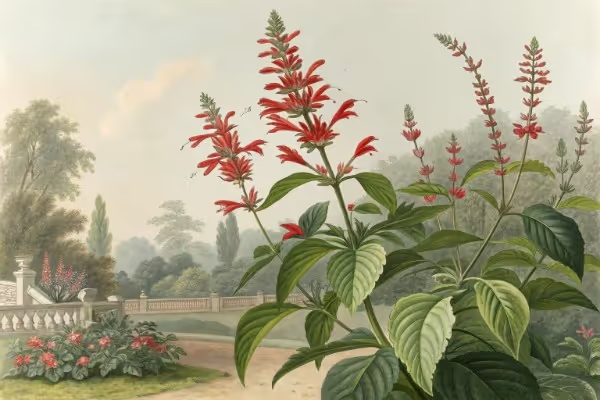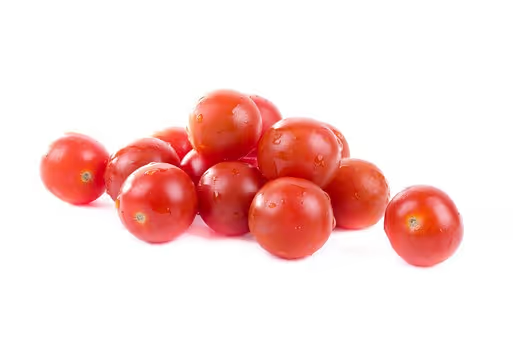Growing Zucchini: How to Plant, Care, and Harvest Abundantly

Growing Zucchini
Growing zucchini begins with sun-soaked, nutrient-rich soil and attentive spacing. Select a sun-drenched site, loosen earth packed with compost, and sow seeds an inch deep—zucchini craves room, so space plants three feet apart. With plentiful watering and attentive care, your zucchini patch rewards you handsomely; read on for tips to maximize your bounty.
Cheatsheet: Zucchini Planting & Heavy Harvests
🌱 Variety & Site
- Choose: Disease-resistant seeds (e.g., "Black Beauty", "Costata Romanesco").
- Full sun: Minimum 6 hours daily.
- Soil: Well-draining, rich in compost, pH 6.0–7.5.
- Spacing: 36 in/90 cm between plants.
⏳ Sowing Steps
- Direct sow after frost (Soil ≥60°F/16°C); sow 1 in/2.5 cm deep.
- Plant 2–3 seeds per hill; thin to strongest seedling.
- Mulch to retain moisture & suppress weeds.
💧 Feeding & Maintenance
- Keep soil moist, water at base — 1–1.5 in/2.5–4 cm weekly.
- Feed monthly: balanced organic fertilizer.
- Hand-pollinate for more fruit if bee activity is low.
- Monitor for squash bugs or powdery mildew.
✂️ Harvesting
- Begin at 6–8 in/15–20 cm length (40–60 days from sowing).
- Pick every 2–3 days for peak yield.
- Use sharp shears/knife to prevent stem damage.
🛠️ Tools and Products You'll Need
- Hand trowel
- Pruning shears
- Watering can or soaker hose
- Quality seeds
- Compost
- Mulch
- Garden gloves
🥗 Benefits
- Rich in vitamin C, B6, potassium, and fiber.
- 42 calories per medium fruit.
- Boosts summer self-sufficiency — 2 plants feed a family.
-
Growing Zucchini: site, soil, timing
Zucchini sprints in heat, so I wait until soil hits 65 to 70 F, 18 to 21 C, and nights stay above 55 F, 13 C.
Direct sow 1 inch deep, 2.5 cm, after last frost or set sturdy transplants once roots fill the cell.
Give full sun for 8 hours, wind protection, and rich, well drained loam at pH 6.2 to 6.8.
In cool springs I prewarm beds with clear plastic for a week and then mulch after emergence.
Soil prep that pays all season
I blend 2 to 3 inches, 5 to 8 cm, of finished compost into the top 8 inches, 20 cm, and add a balanced organic fertilizer at planting.
Side dress with a nitrogen source, such as feather meal or fish hydrolysate, when vines start flowering and again after the first heavy pick.
Planting formats that work
- Direct sow: 2 seeds every 24 to 36 inches, 60 to 90 cm, thin to the strongest.
- Hills: 3 seeds per hill, thin to 2, with hills spaced 3 to 4 feet, 0.9 to 1.2 m.
- Containers: 15 to 25 gallons, 57 to 95 L, one plant per pot with a stout stake and drip line.
I start a second sowing 3 to 4 weeks after the first to stagger peak production.
The backup planting saves me when squash vine borer visits in mid summer.
Care: water, feeding, airflow
Zucchini drinks 1 to 1.5 inches of water per week, 25 to 38 mm, more in heat spikes, and I favor slow deep soaks.
Mulch 2 to 3 inches, 5 to 8 cm, to keep roots cool and leaves dry, which helps hold off powdery mildew.
Train the plant up a tomato stake by gently tying the main stem, then prune a few tired lower leaves for airflow.
This tidy method makes harvest faster and reduces slug hideouts.
Pollination and fruit set
Zucchini makes separate male and female flowers, with females carrying a tiny fruit behind the blossom.
Bees usually handle the morning shift, but I hand pollinate at dawn with a male flower if fruit tips yellow and stall.
For hand pollination, strip petals off a male, dab fresh pollen onto the female stigma, then mark the stem with a tie.
I avoid spraying insecticides during bloom to keep pollinators working unbothered.
"Squash flowers open early in the morning and are most receptive for a few hours," report several university extensions, which is why hand pollination works best at dawn.
Harvest and storage
I cut fruit at 6 to 8 inches, 15 to 20 cm, for peak texture, and check plants daily since growth can jump overnight.
Let one hide and you will grow a club, which I grate for fritters and move on.
Pick with a knife or pruners to avoid tearing the stem and invite new blossoms.
Store unwashed at 45 to 50 F, 7 to 10 C, in a perforated bag for up to a week, then wash right before cooking.
Edible blossoms
I harvest male flowers for stuffing and frying, leaving several each morning for pollinators.
Pick when they first open, before heat wilts them by midday.
Yield expectations
With fertile soil, tight spacing, and steady water, one plant feeds a household through summer.
Extension trials commonly report 6 to 10 pounds per plant across a season, roughly 2.7 to 4.5 kg, assuming good pollination and disease control.
Pests and diseases: my field notes
Squash vine borer
I wrap stems at soil level with a strip of aluminum foil, then use row cover from transplant until the first female flowers open.
Watch for orange eggs on stems, remove them, and succession plant to stay ahead of midseason losses.
Squash bugs
I scout leaf undersides for bronze egg clusters, crush them, and trap adults under a flat board overnight.
Neem or soapy water on nymphs helps, but early manual control does the heavy lifting.
Cucumber beetles and bacterial wilt
Yellow sticky cards give me pressure intel, then I protect seedlings with row cover until flowering begins.
Rotate out of cucurbits for 2 to 3 years and pull wilted plants quickly to limit spread.
Powdery mildew
I start resistant varieties, space generously, water at soil level, and prune for light penetration.
At first flecks I spray sulfur or potassium bicarbonate in the evening and repeat after rain.
Blossom end rot and fruit abort
Irregular watering and a wild root zone can limit calcium uptake, so I keep moisture steady and mulch deep.
Misshapen, half grown fruit often means poor pollination, which a morning hand pollination streak fixes fast.
Top zucchini varieties I trust
- Dunja F1: fast, open habit, strong powdery mildew tolerance, heavy early set.
- Black Beauty: classic heirloom flavor, reliable in warm soils, glossy dark green fruit.
- Costata Romanesco: ribbed, nutty, dryer flesh that grills beautifully, big blossom yield.
- Zephyr: bi color fruit with firm texture, thrives in heat, eye catching for market.
- Golden Glory: bright yellow fruit that stands out in foliage, easy picking.
- Astia: compact for containers, sets well in tight quarters.
- Patio Star: true patio plant, short internodes, steady early crop.
- Cocozelle: Italian striped, excellent raw or sautéed, vigorous in poor soils.
- Tromboncino, C. moschata: borer resistant, trellis it, zucchini like when young.
- Eight Ball: round fruit for stuffing, prolific in summer heat.
Containers and small spaces
I run one plant per 20 gallon, 75 L, pot with a 6 foot, 1.8 m, stake and a drip emitter at 1 gallon per hour, 3.8 L per hour.
Feed lightly every 10 to 14 days, prune lower leaves, and rotate the pot a quarter turn weekly to keep shape balanced.
Fertilizer rhythm
Base feed at planting, then side dress when vines sprawl and again after first big pick with a nitrogen source at 0.25 cup per plant.
Leaf color tells the tale, so pale new growth means bump the feed and check root moisture.
Trellising and pruning
I tie the main stem every 6 inches, 15 cm, and remove a few oldest leaves near the soil once fruiting gains steam.
This keeps leaves off damp mulch and improves spray coverage if I need it.
Water strategy that keeps fruit tender
Soak deeply in early morning, then let the surface dry by sunset, which cuts disease pressure.
A simple moisture meter or finger test at 2 inches, 5 cm, saves more crops than any gadget I own.
Quick troubleshooting
- Yellowing between veins: magnesium stress, try a light Epsom salt foliar at dusk and check pH.
- Sudden plant collapse with frass at stem: vine borer, remove grub with a slit and mound soil over the wound.
- Tiny fruit dropping: poor pollination or heat, hand pollinate at dawn and shade plants during extreme afternoons.
- Bitter fruit: stress can spike cucurbitacins, discard bitter squash and avoid seed saving from stressed plants.
- Weird stripes and mottling: possible virus, rogue out plants and control beetles.
Gear that earns its keep
- Soil thermometer for spring planting windows.
- Floating row cover with hoops for early protection, remove at flower time.
- Drip kit with pressure regulator, keep foliage dry and roots steady.
- Mulch, either clean straw or chipped leaves, to buffer moisture and soil temp.
- Sulfur or potassium bicarbonate for early powdery mildew hits.
- Yellow sticky cards for beetle monitoring near plant height.
- Bypass pruners for clean cuts at harvest and quick leaf pruning.
Succession and rotation
I plant a new wave every month until midsummer, which stretches tender fruit into fall if frost holds off.
After zucchini, I rotate to legumes or roots for two seasons to rest the soil and dodge soilborne headaches.
My hard won truths
Give zucchini heat, moisture, and space, then stay ruthless with harvest and scouting.
Turn your back for a day and it will hand you a bat, which feels like zucchini comedy straight out of July.
Science backed notes and quotes
Many extensions recommend 1 to 1.5 inches of water per week for summer squash, applied at soil level to deter foliar disease.
"Avoid broad spectrum insecticides during bloom to protect pollinators," advise pollinator conservation groups and university extensions.
University extensions also point to soil pH in the mid sixes, steady moisture, and rotation for strong yields.
These guidelines match what I see each season, from first bloom to the last basket.
Referenced organizations
- USDA and state Cooperative Extension publications on summer squash culture.
- University of Minnesota Extension, Penn State Extension, Clemson Extension, and UC IPM vegetable notes.
- RHS cultivation advice for courgettes in temperate climates.
- Xerces Society guidance on pollinator safe practices.
Frequently Asked Questions About Growing Zucchini
What soil type best suits zucchini plants?
Zucchini thrives in a fertile, well-draining soil with ample organic matter mixed in. Aim for a soil pH between 6.0 and 7.5 to encourage healthy plant growth.
When is the best time to sow zucchini seeds outdoors?
Plant zucchini seeds outdoors after the final frost date, ensuring soil temperatures consistently reach at least 60°F (16°C). Warm soil is essential for rapid germination and vigorous growth.
How much sunlight do zucchini plants require?
Zucchini plants thrive with a minimum of 6 to 8 hours of direct sunlight each day. Position the plants to ensure maximum sun exposure, supporting abundant flowering and fruit production.
What spacing should be maintained between zucchini plants?
To provide adequate room for growth and proper airflow, space zucchini plants approximately 24 to 36 inches (60 to 90 cm) apart in rows, with about 3 to 4 feet (90 to 120 cm) between each row.
How frequently should zucchini plants be watered?
Regular watering is necessary to maintain evenly moist soil. Water your zucchini plants deeply at least once a week, supplying around 1 inch (2.5 cm) of water. Increase frequency during hot or dry weather conditions.
Why are zucchini flowers falling off without forming fruit?
This typically occurs early in the season with male flowers, which naturally drop after pollination. If flowers continue dropping later, it indicates inadequate pollination. Encourage pollinators to your garden or hand-pollinate flowers to enhance fruit development.
When should zucchini fruits be harvested?
Harvest zucchini when they reach approximately 6 to 8 inches (15 to 20 cm) in length. Use a sharp knife or pruners to remove fruits carefully. Frequent harvesting promotes continuous fruit production throughout the growing season.
Growing zucchini isn’t fancy, but it’s pure satisfaction. Give your plants rich soil, steady water, and room to sprawl. Pick the fruits young—don’t let them turn into baseball bats. Keep an eye out for squash bugs and powdery mildew; a little vigilance goes a long way. Rotate crops and feed the soil if you want repeat performances year after year. If you’re hooked on squash, you might want to try your hand at winter squash next. In the end, growing zucchini is about abundance—enough to share, enough to savor, and always enough to remind you that the best things in the garden are the ones you grow yourself.
Pro Tips From Organic Growers for Thriving Zucchini
Soil Conditioning Strategies
- Biochar Boost: Add biochar (5–10% volume) into compost to strengthen soil microbiome and enhance water retention.
- Comfrey Mulch: Layer thinly shredded comfrey leaves around zucchini plants—provides a slow-release potassium feed.
Natural Pest Prevention Techniques
- Borage Companion Planting: Position borage nearby to attract beneficial insects like bees and deter squash beetles.
- Reflective Mulches: Spread aluminum foil mulch around young zucchini plants—reflects light, repelling aphids and squash vine borers.
- Neem Oil Spray: Apply weekly neem oil solution (30 ml per 4 liters/1 oz per gallon water)—interrupts insect life cycles naturally.
Innovative Irrigation Methods
- Sub-irrigation Containers: Grow zucchini in pots with sub-irrigation reservoirs for consistent watering and nutrient efficiency.
- Clay Pot Irrigation: Bury porous clay pots (ollas) next to plants, filled weekly—provides balanced moisture with minimal water waste.
Maximizing Nutrition and Productivity
- Seaweed Feeding: Spray diluted kelp extract (1:50 dilution) every two weeks—delivers micronutrients and boosts yield potential up to 20%.
- Zucchini Blossom Management: Harvest male blossoms early morning to encourage higher female-fruit ratio and increase edible yields.
Preserving Harvest Nutritionally and Sustainably
- Ferment for Health: Convert excess yield into lacto-fermented zucchini pickles rich in beneficial probiotics.
- Solar Dehydration: Slice zucchinis (3–5 mm thick), sun-dry roughly 8–12 hours for long-season storage—retains vitamins and minerals effectively.
Find out which plants will thrive in your garden!
Answer a few fun questions and get custom plant recommendations perfect for your space. Let’s grow something amazing together!

start your season





